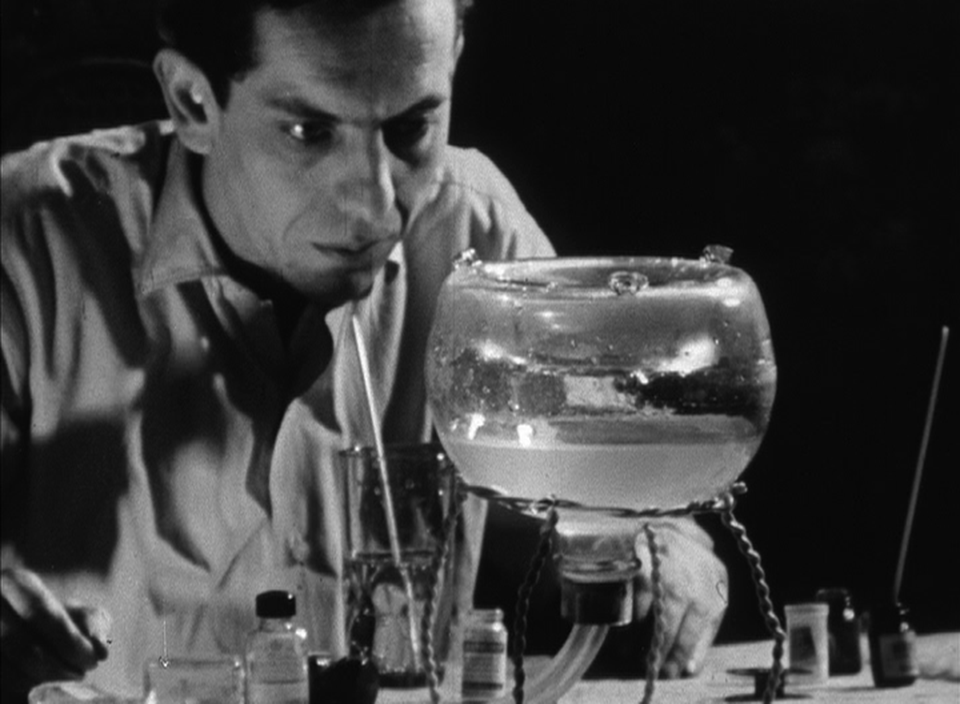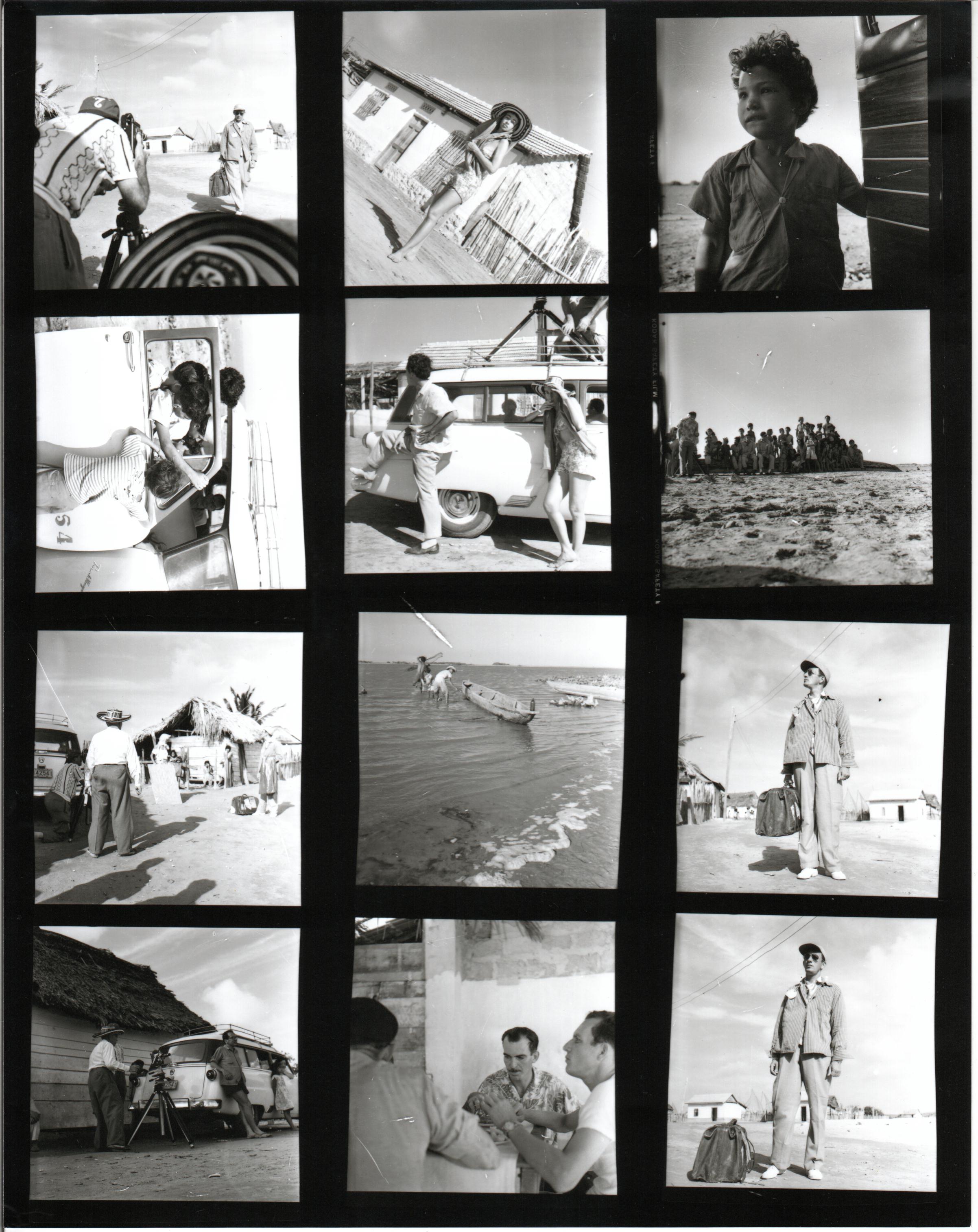Several well-known auteurs, including Alejandro Jodorowsky and Rafael Corkidi, whose films are characterized by disturbing, dream-like imagery, absurdist juxtapositions, and other devices characteristic of surrealism hail from Latin America. Many exiled surrealists fleeing fascism in Europe found home in Latin America, including Luis Buñuel, who made over twenty features in Mexico. This program highlights some less familiar Latin American short films that share surrealist preoccupations, including the Colombian treasure The Blue Lobster.
Rounding out the program are four additional shorts. Two are early works, one made by the Argentine photographer Horacio Coppola while he was studying at the Bauhaus in that school’s final years, the other one of the very films by the very prolific Chilean director Raúl Ruiz. The Peruvian painter Fernando de Szyszlo, still active today at 92, directed Esta pared no es medianera shortly after befriending André Breton in Paris. Finally, the late Luis Ernesto Arocha, also from Barranquilla, contributes a study of Bernando Salcedo’s assemblage sculptures.
La langosta azul (The Blue Lobster)
In the 1950s, in Barranquilla, Colombia, Álvaro Cepeda Samudio led a team shooting a film based on The Blue Lobster, a short story composed with his close friend Gabriel García Márquez over the course of several gatherings and phone calls. Cepeda, renowned for his constant and overwhelming enthusiasm, was the primary intellectual engine (to the point of obsession) of bringing The Blue Lobster to the screen. Unfortunately, at that time, neither Cepeda nor his friends knew how to make movies. They were fans that had seen many films and read much about cinema, but they had never stepped behind the camera and tried to make one. Known as el Grupo de La Cueva, Cepeda and his friends (Luis Vicens, Nereo López, Guillermo Salvat, Enrique Grau, Cecilia Porras, Ramón Jessurum, Alejandro Obregón and García Márquez) each contributed something, including financial and logistical resources.
The film was shot in 1954 in the village of La Playa, a community of fishermen a few kilometers from Barranquilla, using 16mm film. Silent and 29 minutes long, it tells the story of a foreign secret agent, known only as the “Gringo,” who is investigating the presence of radioactivity in lobsters caught by a village of Caribbean fishermen. When the “Gringo” (played by Nereo López who was chosen for the role because he had green eyes, although the film was in b&w) decides to take a break and leaves his hotel, a cat steals one of the supposedly contaminated lobsters. In a frenzied state he ventures out into the village in search of it. While all this is happening the camera documents the lives of the villagers and the environment in which they live.
Cepeda was no fan of traditional storytelling and said that cinema was a different form of expression that failed when it tried to be literary, theatrical, or pictorial. For him, images should be in black and white, silent, and reliant only on their own means of expression. He cited Robert Bresson’s A Man Escaped as an example, but The Blue Lobster has nothing in common with Bresson’s film. It is therefore in keeping with Cepeda’s transgressive spirit and interest in new languages that he would inspire his friends in Barranquilla to continue with their cinematic experiments.
The film went almost 40 years without being shown because there was little interest and because it was made using 16mm reversal film: there was a single copy and no negative. Every screening would damage the unique master, until 1990 when an internegative was produced for an exhibition at the Museum of Modern Art in New York and the film was once again able to circulate.
Marta Lucía Vélez

